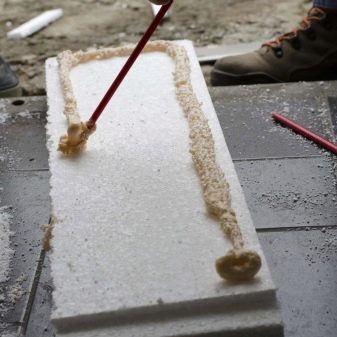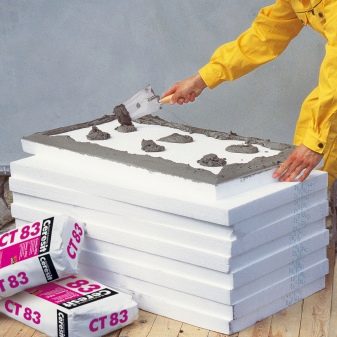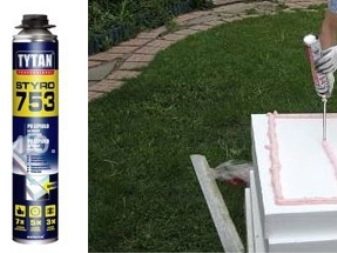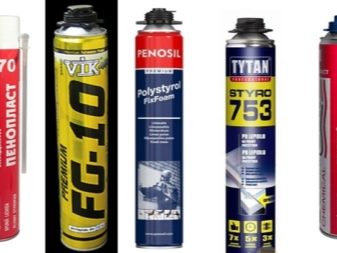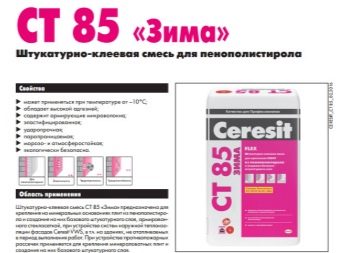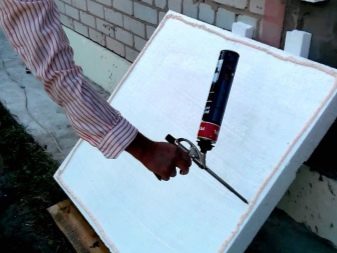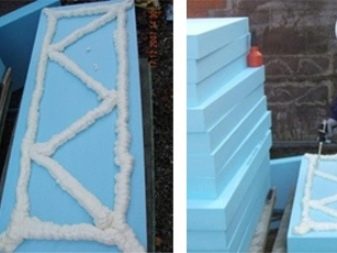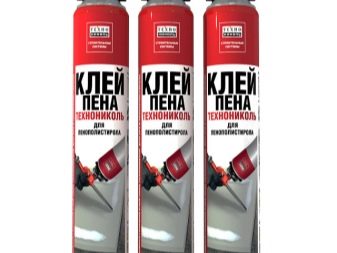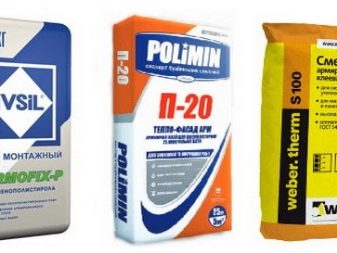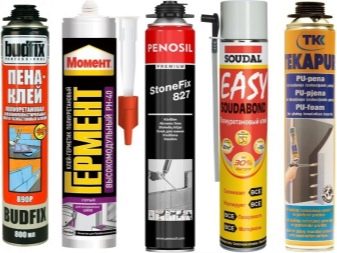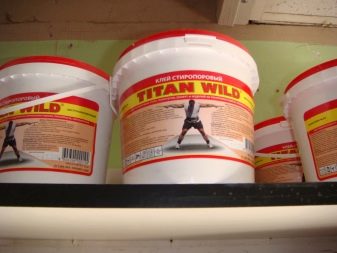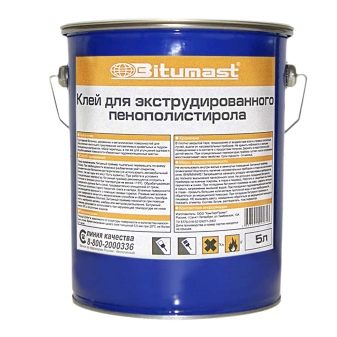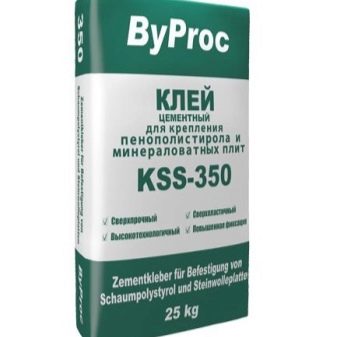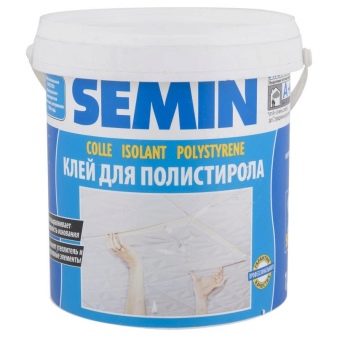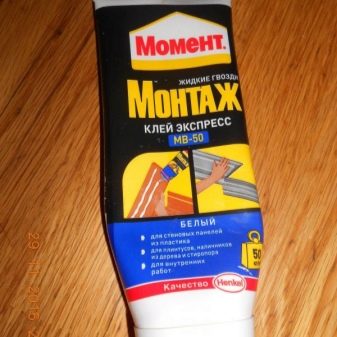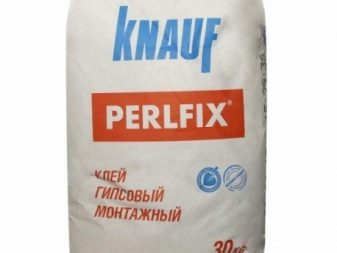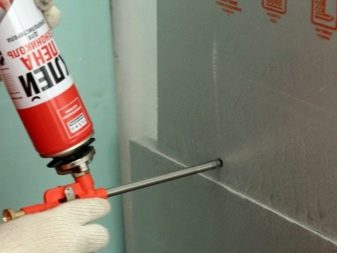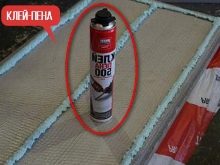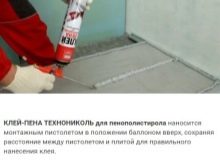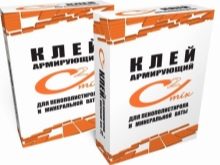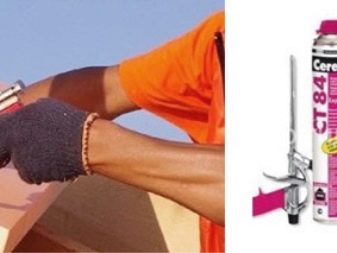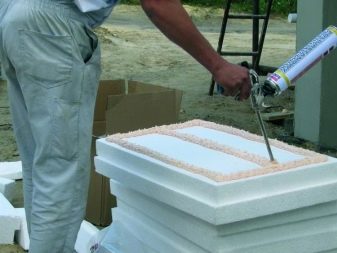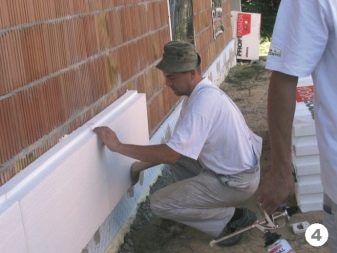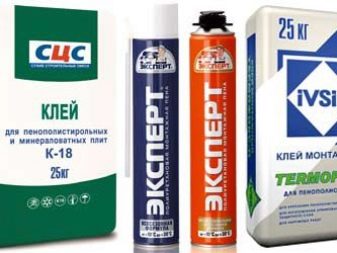What is the glue for polystyrene foam and how to choose the appropriate option?
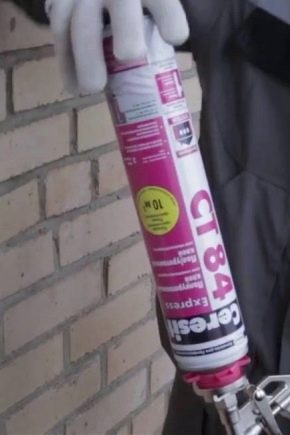
When finishing surfaces of great importance is the quality of the material. But besides the characteristics of facing materials, the method of its fastening is also important. For example, if we are talking about expanded polystyrene, it is worth thinking about the correct choice of adhesive composition for its fixation.
Features of mounting material
For insulation of facades and interior work uses a variety of different construction products. One of these products is polystyrene foam.The material is a plate having different dimensions and thickness. For fixing the plates to various bases, including concrete and metal, specialized adhesive compositions are purchased.
The main task of the adhesive for polystyrene is the presence of properties that provide high-quality attachment of the material to the surface.
Manufacturers of such products are both domestic and foreign companies. Allocate funds for exterior and interior.
According to experts, when choosing an adhesive for mounting the material, you need to pay attention to a few key points.
- The main task of adhesives is to ensure reliable adhesion of the plates with the base, so the price of the products in this case plays a secondary role.
- Adhesive solutions or mixtures (especially products intended for outdoor use) must be resistant to temperature fluctuations, precipitation and other negative environmental influences.
- Sustainability of compositions plays an important role. If you do not pay attention to this nuance when buying a composition for interior decoration, the product may adversely affect the health of people in the room.
- Easy installation is also a significant nuance.
As practice shows, not all products presented on the shelves of supermarkets, meet the above requirements. Because of this, the process of installing polystyrene foam is often complicated.
There is a certain specifics of working with glue for exterior finishing works. As for the bituminous and cement mortar, the compositions should be applied with a permanent layer on the surface of the plate. The base of the wall, in turn, must be prepared in order to glue the product as hard as possible. To do this, it is cleaned of dirt and ground.
If you intend to install polystyrene foam using adhesive foam, the composition is applied around the perimeter of the product, as well as in the center of the zigzag. After that, the plate is fixed on the surface.
If excess solution is formed, they are carefully removed after the glue hardens. If the material dries out for a very long time, it is better to fix the plates with the help of props.
Overview of Adhesives
Adhesives for indoor and outdoor use vary in composition and characteristics. They can also have a different consistency, be realized in the form of a dry or ready-to-work mixture. The only property that unites all types of glue is the prohibition of the inclusion of any solvents. Contact of gasoline or acetone with insulation is unacceptable, because these substances can burn it through.
As for glue-foam, this kind of product is very convenient for use due to the simplicity of application. The finished composition includes all the necessary components to quickly and efficiently glue the product. However, it should be noted that such glue dries out very quickly. It is used most often as a single-use product.
Dry compositions allow you to use them several times, mixing the mixture in batches, as needed.
Experts advise to give preference to dry products when the work surface has defects and irregularities.
Glue-foam for exterior work has a polyurethane base and is implemented in cartridges, which simplifies the application of the composition to the sheets of material. Unlike bituminous products, it dries quickly, so there is no need to use material supports. The tool gains strength in a couple of hours.
As for the popular brands of adhesive solutions for outdoor work, you can mention the products of Ceresit, Berg and Knauf. These brands have already won the trust of customers due to the high quality products.
Adhesive compositions designed to work with polystyrene plates can be divided into two types:
- dry products;
- polyurethane solutions.
The differences of these groups are in the method of breeding, packaging, appearance, as well as the technology of material processing.
In addition, products for working with polystyrene foam can be divided into formulations for separate use and universal products. The latter variety has a wider scope. Such compositions can not only perform basic functions, but also serve as a means for the reinforcement of plates with a grid. To their disadvantages include the average quality characteristics. However, this disadvantage justifies the affordable cost of production. For more reliable installation, preference is given to adhesive solutions or mixtures of a narrow spectrum of action.
For outdoor use
The most suitable composition for external work with polystyrene foam plates can be considered bituminous glue, despite the fact that it contains a solvent. This component does not pose any danger to insulation. The products are sold completely ready for application. To glue the surfaces together, bitumen glue must be applied to the wall.
The next popular view is cement gluewhich is perfect for working with a brick foundation, walls of concrete and cinder block, as well as for fixing the ceiling tiles. Typically, this mixture is sold in dry form, and to prepare the powder is diluted with water. The downside to dry products is the fact that it takes some time to dilute the glue to the desired consistency. However, the cement-polymer composition and low cost make the product very popular. It is suitable for those cases when extruded polystyrene foam is used as insulation.
In room
When carrying out the installation of expanded polystyrene plates indoors, it is necessary to use compositions that meet the following requirements:
- high level of adhesion;
- the absence of toxic substances in the composition;
- resistance to temperature fluctuations;
- fast installation and minimum quantity of smudges.
In apartments and houses with constant positive air temperature and minimum humidity of the plate can be glued to the surface with glue Pva. In rooms where the humidity is high enough, it is better to use glue rubber based. Such products perfectly manifests itself in working with metal, plastic, concrete, wood and ceramics.
Dry plaster mix can be used for surfaces with base defects. This group includes glue "Knauf Perflix". This is a completely natural product that is intended only for indoor use.
When working with decorative elements and ceiling surfaces should stop the choice on water soluble formulations. Such products have a white color, so it allows you to hide all existing seams and joints between the sheets of material.
Glue-foam can be applied to basements, balconies, walls and floors. It should be applied at temperatures from 0 to +35 C.
Characteristics and consumption
According to experts, the most economical composition in terms of product consumption are polyurethane foam and adhesive putty for painting for outdoor use.
To calculate the estimated consumption of adhesive, you need to have an idea of the average amount of its consumption. This value depends on the product, its type, as well as manufacturing technology.
On average, dry powders have a consumption of approximately 500 grams per 1 m2 of material. For the bituminous mixture, this indicator ranges from 800 grams or more per 1 m2. Polyurethane adhesives are remarkable in that they have the most minimal consumption - 1 cartridge is usually enough for 10 m2.
Tips for choosing
Going to the supermarket for glue for repair work, you should take into account the following important nuances associated with the choice of tools:
- quality products should not be tough;
- vapor permeability of the composition should have an average index;
- with regard to density, one should give preference to the most durable compounds, this saves on product consumption;
- during outdoor work, solution stability to negative temperatures is of particular importance;
- Each manufacturer sets its price for the products, so it is impossible to say with certainty that cheaper products are of lower quality.
What else can you stick?
- Among the variety of adhesive compositions suitable for polystyrene, can be identified Styrene glue, which is also used for mounting polyurethane and polystyrene. Among the positive features of the product can be noted reliable fixation of the material to concrete, plaster and most wood-containing bases. The products have a wide range of applications, therefore it is allowed to work both indoors and outdoors. In addition, after complete drying, the material can be further treated with coloring compositions or varnish.
- Reliable adhesive provides good fixation of raw materials, but some masters use the available tools in working with polystyrene foam, for example, liquid nails or tile mastics. Often for the installation of the material used silicone sealant. However, when choosing such compositions, people do not take into account the fact that such solutions most often corrode the material.
- For sticking raw materials on a small surface sometimes can use double-sided tape. But this method allows a well-fixed material only if the base is small.Otherwise, this installation option is not worth considering.
For information on how to properly apply glue foam on the example of "TechnoNIKOL", see the following video.
